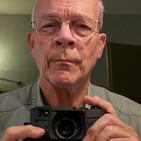Anatomy of the Leica M8's Power Consumption
-
Recently Browsing 0 members
- No registered users viewing this page.
-
Similar Content
-
- 9 replies
- 317 views
-
- 3 replies
- 746 views
-
- 10 replies
- 1,953 views
-
- 4 replies
- 173 views
-
Q3 won't power off 1 2
By LeicaQ3,
- 26 replies
- 4,412 views
-





Recommended Posts
Join the conversation
You can post now and register later. If you have an account, sign in now to post with your account.
Note: Your post will require moderator approval before it will be visible.